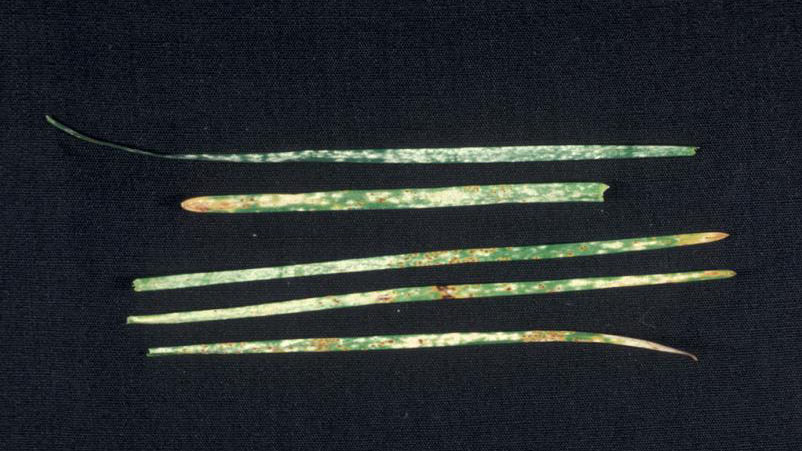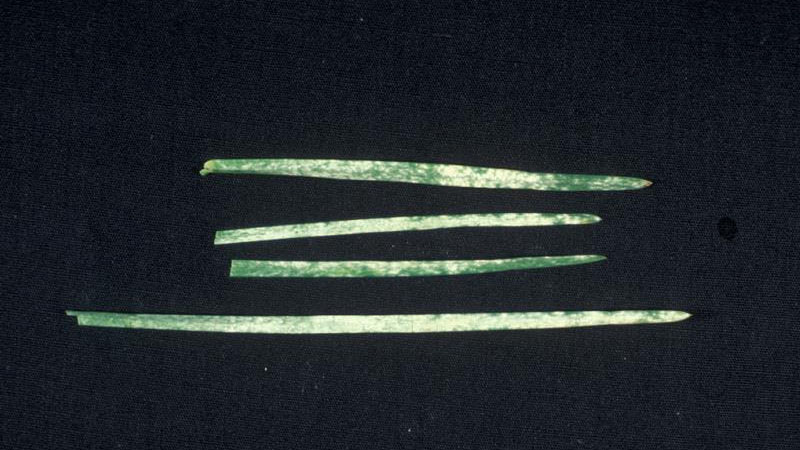Powdery Mildew in Turf
en Español / em Português
El inglés es el idioma de control de esta página. En la medida en que haya algún conflicto entre la traducción al inglés y la traducción, el inglés prevalece.
Al hacer clic en el enlace de traducción se activa un servicio de traducción gratuito para convertir la página al español. Al igual que con cualquier traducción por Internet, la conversión no es sensible al contexto y puede que no traduzca el texto en su significado original. NC State Extension no garantiza la exactitud del texto traducido. Por favor, tenga en cuenta que algunas aplicaciones y/o servicios pueden no funcionar como se espera cuando se traducen.
Português
Inglês é o idioma de controle desta página. Na medida que haja algum conflito entre o texto original em Inglês e a tradução, o Inglês prevalece.
Ao clicar no link de tradução, um serviço gratuito de tradução será ativado para converter a página para o Português. Como em qualquer tradução pela internet, a conversão não é sensivel ao contexto e pode não ocorrer a tradução para o significado orginal. O serviço de Extensão da Carolina do Norte (NC State Extension) não garante a exatidão do texto traduzido. Por favor, observe que algumas funções ou serviços podem não funcionar como esperado após a tradução.
English
English is the controlling language of this page. To the extent there is any conflict between the English text and the translation, English controls.
Clicking on the translation link activates a free translation service to convert the page to Spanish. As with any Internet translation, the conversion is not context-sensitive and may not translate the text to its original meaning. NC State Extension does not guarantee the accuracy of the translated text. Please note that some applications and/or services may not function as expected when translated.
Collapse ▲Symptoms
The symptoms of powdery mildew are typically most severe in heavily shaded areas. In the initial stages of disease development, a white or gray, powdery growth is evident on infected leaves. Heavily infected leaves turn yellow or red and die slowly. If left uncontrolled for several weeks, powdery mildew will cause significant thinning of the turf and may also increase its susceptibility to environmental stresses or other pests.
Development Factors
The fungus survives the winter in living plant tissue. Spores are produced in the spring and are spread to healthy tissue by wind. The spores germinate and infect leaves during cool, humid conditions in the spring and fall. Because sunlight inhibits growth of the powdery mildew fungus, turf that is growing in dense shade is most prone to the disease. Unlike most foliar diseases, leaf wetness is not required for development of powdery mildew, but high humidity is necessary.
Cultural Control
Planting shade-tolerant grasses, such as the fine fescues (hard fescue, chewings fescue, or red fescue), is one of the best means of preventing severe problems with powdery mildew. A mixture of Kentucky bluegrass in combination with tall fescue and a fine fescue is preferred.
Turf growing in shade uses less nitrogen, requires less water, and is less tolerant of low mowing. Management practices should be adjusted accordingly for shaded areas. Apply no more than 1 pound of nitrogen per 1,000 square feet at any one time. Maintain mowing height at approximately 3 inches to increase rooting and provide greater leaf surface for photosynthesis. Water deeply and infrequently to enhance rooting and reduce leaf wetness. Avoid light, frequent watering and do not irrigate just before sunset or after sunrise because this extends the leaf wetness period which favors disease development. Pruning, removal, or careful placement of trees and shrubs to increase light intensity and air movement will help control powdery mildew.
Chemical Control
Through the use of proper cultural practices, powdery mildew can be managed to acceptable levels without fungicides in most cases. Fungicides can be applied on a curative basis if an unacceptable amount of disease develops. Mapping affected areas for treatment will help to minimize fungicide use.
Species Data
- HOST SPECIES
- Kentucky bluegrass, fine fescue, perennial ryegrass
- MONTHS WITH SYMPTOMS
- April to September
- STAND SYMPTOMS
- irregular distribution across turf stand
- FOLIAR SYMPTOMS LOCATION / SHAPE
- FOLIAR SYMPTOMS COLOR
- white
- ROOT / CROWN SYMPTOMS
- none
- FUNGAL SIGNS
- powdery spore masses





